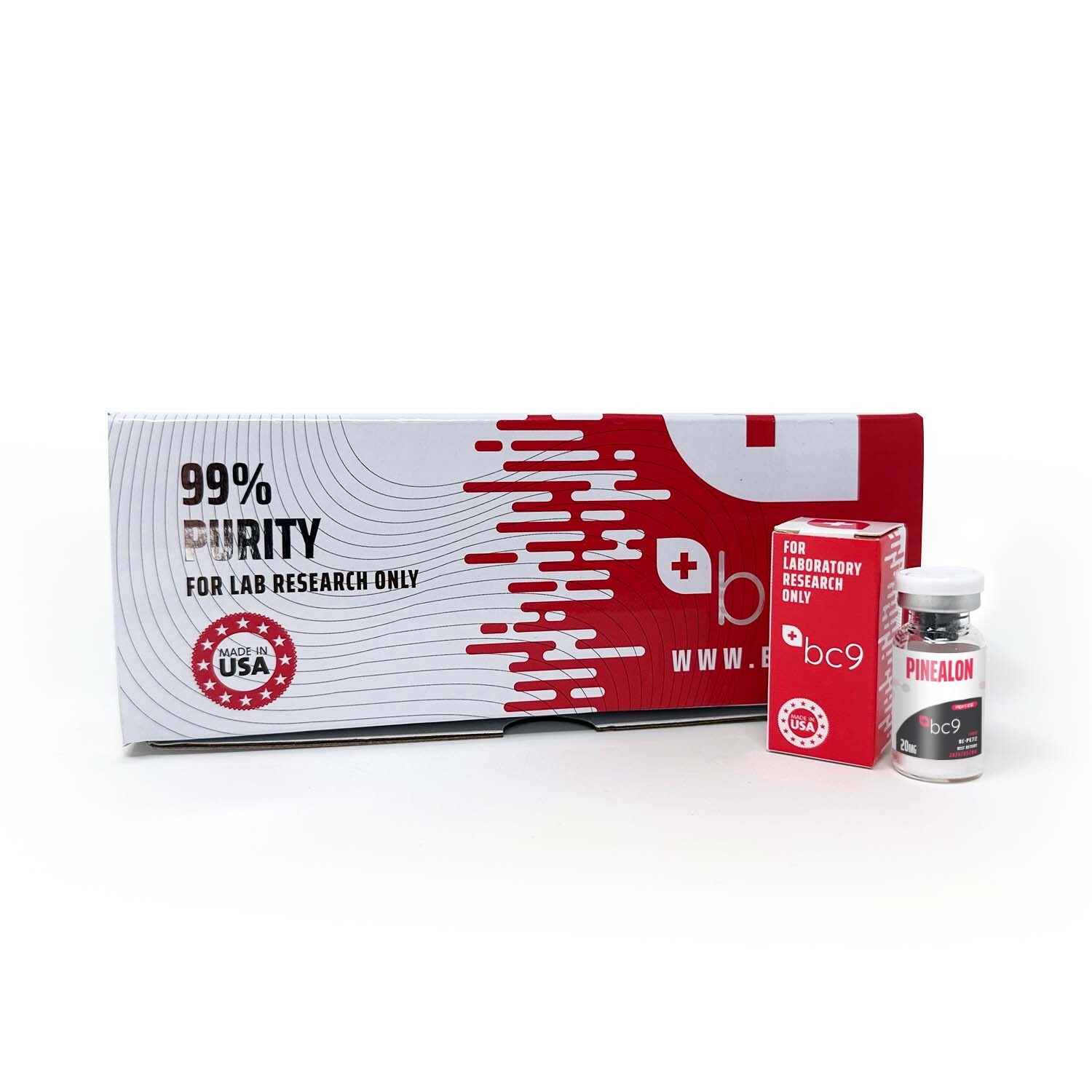The field of neuropeptide research has gained immense attention due to compounds like Pinealon, Semax, and Selank, each showing unique mechanisms in neuroprotection, cognitive enhancement, and stress modulation. Understanding how these compounds differ and overlap in their biological actions can provide deeper insight into their research potential and applications in neurobiology.
Understanding Pinealon: A Tripeptide with Neuroprotective Potential
Pinealon is a short tripeptide (Glu-Asp-Arg) derived from the pineal gland and studied primarily for its role in neuroprotection, anti-aging, and cognitive regulation. As a Pinealon research compound, it has demonstrated the ability to modulate gene expression linked to cell survival, mitochondrial stability, and oxidative balance.
Key findings from studies on Pinealon include:
- Mitochondrial Regulation: Pinealon supports mitochondrial function by reducing oxidative stress markers such as lipid peroxidation, while enhancing antioxidant enzyme activity (SOD, catalase).
- Gene Expression Influence: It modulates the expression of neurotrophic factors like BDNF (Brain-Derived Neurotrophic Factor), crucial for synaptic plasticity and memory formation.
- Neurogenesis Promotion: Research suggests Pinealon can stimulate neuronal differentiation, potentially aiding in neural regeneration after ischemic or age-related damage.
- Cognitive Enhancement: Animal studies demonstrate improved learning and memory retention due to Pinealon’s regulation of neurotransmitter synthesis and protection against glutamate toxicity.
Semax: Modulating the Brain’s Adaptive Mechanisms
Semax is a synthetic analog of the adrenocorticotropic hormone (ACTH) fragment (Met-Glu-His-Phe-Pro-Gly-Pro) known for its neurotrophic and neuroprotective properties. It enhances mental performance, attention, and resilience to stress by influencing the dopaminergic and serotonergic systems.
Key Mechanisms of Semax
- Upregulation of Neurotrophins – Increases synthesis of BDNF and NGF, contributing to neural plasticity.
- Antioxidant and Anti-Inflammatory Effects – Reduces lipid peroxidation and normalizes cytokine activity, which may protect neurons from oxidative injury.
- Cognitive Support – Enhances concentration and working memory in stressful or fatigued conditions.
- Stress Response Regulation – Acts as a selective melanocortin receptor modulator, balancing the hypothalamic-pituitary-adrenal (HPA) axis.
Clinical studies have observed that Semax’s intranasal administration supports cerebral blood flow and aids post-stroke recovery, making it one of the most extensively studied nootropic peptides.
Selank: The Anxiolytic Peptide with Immunomodulatory Effects
Selank, a heptapeptide (Thr-Lys-Pro-Arg-Pro-Gly-Pro), shares structural similarities with Semax but differs in its primary mechanism anxiolytic and immunomodulatory action. Developed as a synthetic analog of tuftsin, Selank modulates the GABAergic system, promoting a calm yet focused mental state.
Core Properties of Selank
- Anxiolytic Activity: Selank acts on GABA-A receptors to reduce anxiety without sedative effects.
- Cognitive Enhancement: Supports memory consolidation and learning through enhanced serotonin metabolism.
- Immunomodulation: Balances cytokine levels, supporting immune homeostasis.
- Neuroprotection: Prevents damage from oxidative stress and neuroinflammation.
Selank’s dual action mental relaxation coupled with clarity makes it particularly interesting in stress and mood-related neurochemical research.
Mechanistic Comparison: Pinealon vs Semax & Selank
| Feature | Pinealon | Semax | Selank |
| Primary Mechanism | Antioxidant and gene regulation | Neurotrophic and dopaminergic modulation | Anxiolytic and GABAergic modulation |
| Neuroprotective Effect | Strong mitochondrial protection | Reduces ischemic damage | Protects against neuroinflammation |
| Cognitive Impact | Memory retention and anti-aging | Enhances focus and recovery | Improves calmness and cognitive stability |
| Neurochemical Pathways | Modulates BDNF, antioxidant genes | Influences dopamine and serotonin | Modulates GABA and serotonin |
| Common Research Application | Anti-aging, oxidative stress, neurodegeneration | Cognitive fatigue, post-stroke recovery | Anxiety regulation, cognitive stress |
Synergistic Insights: Overlapping Pathways in Neuroprotection
Despite their structural differences, Pinealon, Semax, and Selank share overlapping benefits:
- Antioxidant Defense – All three peptides decrease oxidative stress in neuronal tissues.
- Neuroplasticity Enhancement – By increasing BDNF and modulating neurotransmitters, they promote adaptive brain responses.
- Stress Regulation – Each compound influences the neuroendocrine system, maintaining cognitive stability under pressure.
While Semax and Selank primarily act through neurotransmitter regulation, Pinealon extends its effects at the genetic and mitochondrial levels, offering a broader cellular protection scope.
Pinealon Research Compound: Future Directions
As a Pinealon research compound, its exploration is expanding into the realms of epigenetic aging, neurodegenerative disease prevention, and mitochondrial rejuvenation. Preliminary studies indicate potential in mitigating age-associated neuronal decline, with promising results in:
- Alzheimer’s and Parkinson’s Models: Reduction in neuronal apoptosis and improvement in motor coordination.
- Cognitive Longevity Studies: Maintenance of optimal synaptic activity in aged neurons.
- Gene-Level Anti-Aging Effects: Regulation of expression patterns linked to telomerase and cellular longevity.
Given its potent mitochondrial and genomic regulation properties, Pinealon may serve as a foundational compound in peptide-based neuroprotection research.
Conclusion
Pinealon, Semax, and Selank represent distinct yet complementary avenues in the study of neuropeptide-driven cognitive enhancement and neuroprotection. While Semax and Selank excel in neurotransmitter modulation and stress adaptation, Pinealon’s unique mechanism at the cellular level positions it as a powerful agent in aging and neurodegenerative research.
For ongoing and future investigations, the Pinealon research compound stands out for its potential to bridge molecular neurobiology and practical cognitive optimization through mitochondrial and genomic regulation.



